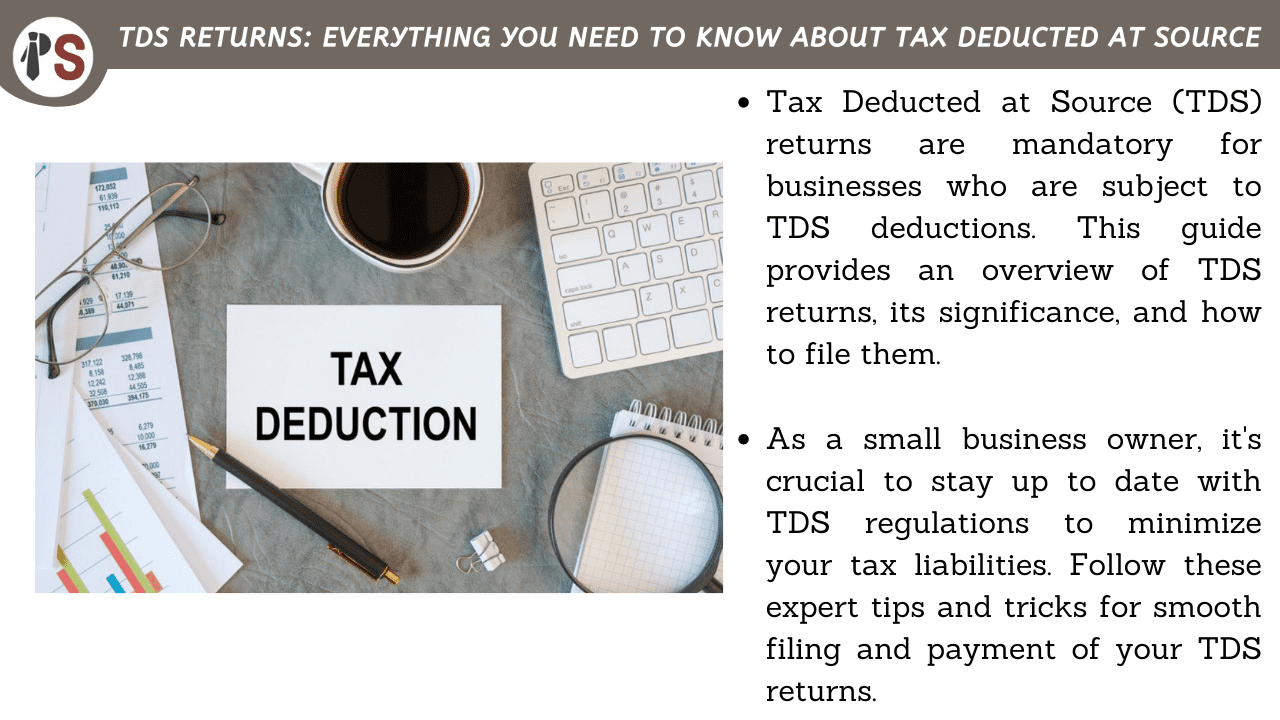
Tax Deducted at Source (TDS) is a type of tax where the payer deducts a certain percentage of tax from the payment made to the payee. TDS is applicable to various types of payments such as salaries, rent, professional fees, and others. The deducted amount is then deposited with the government on behalf of the payee. TDS is an important aspect of taxation, and it is necessary for both the payer and the payee to understand the basics of TDS returns.
In this blog post, we will provide you with a detailed guide on TDS returns, including what they are, who needs to file them, and how to file them.
What are TDS Returns?
TDS returns are the forms used by the deductor to report the details of tax deducted and deposited with the government. It is a quarterly statement that must be filed by the person who deducts tax at source. The statement must include the PAN details of both the deductor and the deductee, the amount of tax deducted, and the nature of the payment.
Who Needs to File TDS Returns?
Any person or entity that is responsible for deducting tax at source must file TDS returns. This includes employers, businesses, and individuals who make payments to vendors or service providers. Additionally, if you are a salaried individual and your employer deducts tax from your salary, you do not need to file TDS returns as your employer will file them on your behalf.
How to File TDS Returns?
TDS returns can be filed both online and offline. The government has made it mandatory for certain entities to file TDS returns online. The online method involves registering on the e-filing portal of the Income Tax Department and submitting the statement through the portal. The offline method involves submitting the statement in physical form to the TDS wing of the Income Tax Department.
To file TDS returns online, follow the steps below:
Step 1: Register on the e-filing portal of the Income Tax Department.
Step 2: Go to the TDS section and select the relevant form.
Step 3: Fill in the required details such as PAN details of the deductor and the deductee, amount of tax deducted, and nature of the payment.
Step 4: Verify the details and submit the form.
Tips and Tricks for Filing TDS Returns:
Ensure that you deduct the correct amount of tax at the source.
Timely deposit the tax with the government and file the TDS returns on time to avoid any penalties.
Keep accurate records of TDS deducted and deposited.
Verify the PAN details of the deductee to avoid any mistakes in filing the TDS returns.
Use online methods for filing TDS returns to avoid any errors or delays.
In conclusion, TDS returns are an essential aspect of taxation for businesses and individuals who deduct tax at source. It is important to file the returns on time and with accurate details to avoid any penalties. By following the tips and tricks mentioned in this blog post, you can ensure that you file your TDS returns correctly and efficiently.
At Professional Saathi, we offer a range of business consultancy services that help businesses improve their performance, achieve growth, and overcome challenges.
Copyright 2026 © Created By KTPG PROFESSIONAL SAATHI CORPORATE CONSULTANT PRIVATE LIMITED, All Rights Reserved.
Leave Your Comment